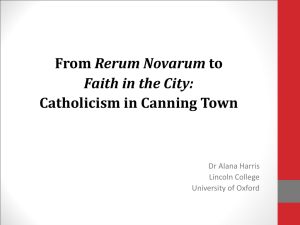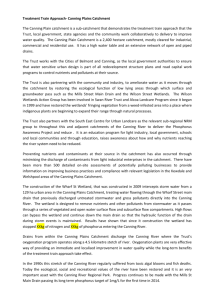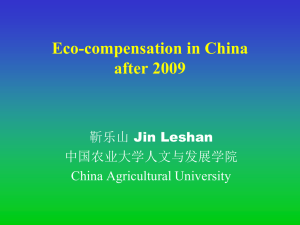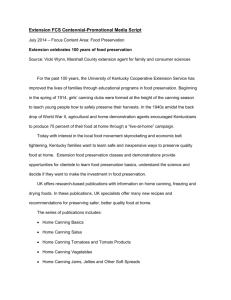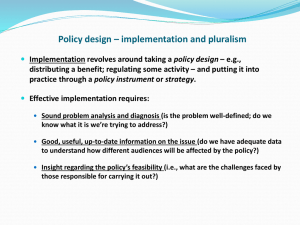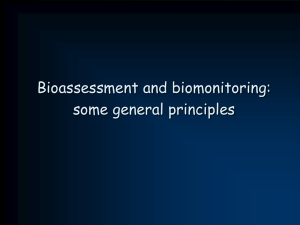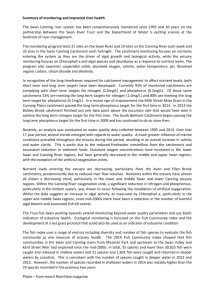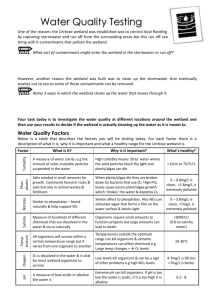Wharf St Wetland Summary Over the past 11 years the Swan River
advertisement
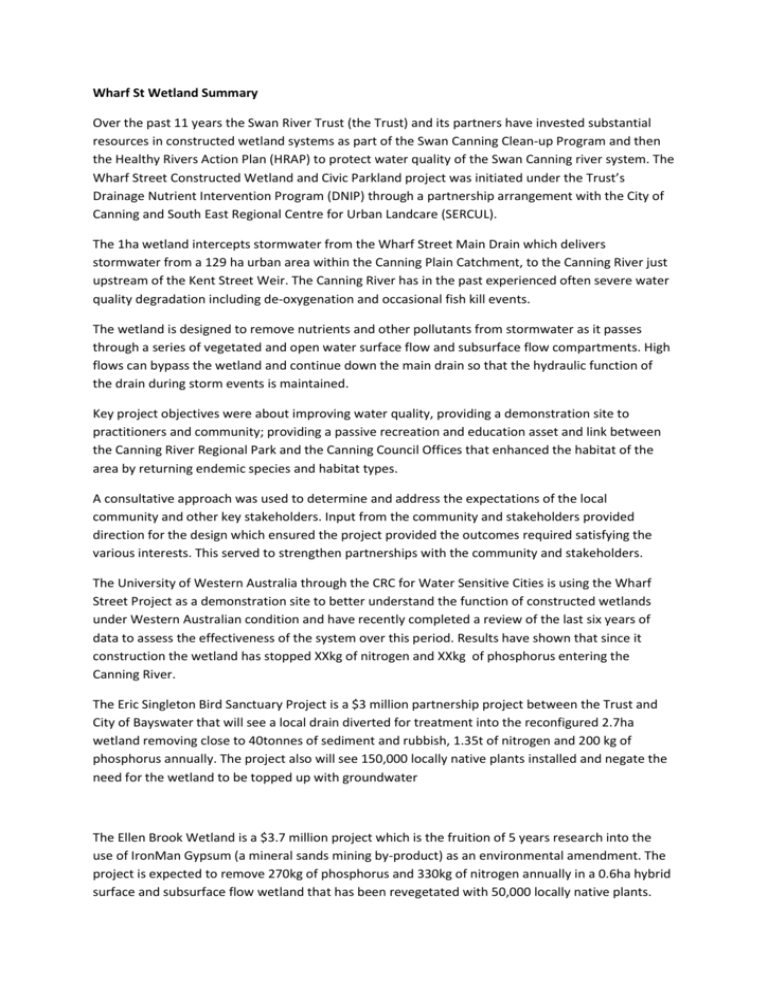
Wharf St Wetland Summary Over the past 11 years the Swan River Trust (the Trust) and its partners have invested substantial resources in constructed wetland systems as part of the Swan Canning Clean-up Program and then the Healthy Rivers Action Plan (HRAP) to protect water quality of the Swan Canning river system. The Wharf Street Constructed Wetland and Civic Parkland project was initiated under the Trust’s Drainage Nutrient Intervention Program (DNIP) through a partnership arrangement with the City of Canning and South East Regional Centre for Urban Landcare (SERCUL). The 1ha wetland intercepts stormwater from the Wharf Street Main Drain which delivers stormwater from a 129 ha urban area within the Canning Plain Catchment, to the Canning River just upstream of the Kent Street Weir. The Canning River has in the past experienced often severe water quality degradation including de-oxygenation and occasional fish kill events. The wetland is designed to remove nutrients and other pollutants from stormwater as it passes through a series of vegetated and open water surface flow and subsurface flow compartments. High flows can bypass the wetland and continue down the main drain so that the hydraulic function of the drain during storm events is maintained. Key project objectives were about improving water quality, providing a demonstration site to practitioners and community; providing a passive recreation and education asset and link between the Canning River Regional Park and the Canning Council Offices that enhanced the habitat of the area by returning endemic species and habitat types. A consultative approach was used to determine and address the expectations of the local community and other key stakeholders. Input from the community and stakeholders provided direction for the design which ensured the project provided the outcomes required satisfying the various interests. This served to strengthen partnerships with the community and stakeholders. The University of Western Australia through the CRC for Water Sensitive Cities is using the Wharf Street Project as a demonstration site to better understand the function of constructed wetlands under Western Australian condition and have recently completed a review of the last six years of data to assess the effectiveness of the system over this period. Results have shown that since it construction the wetland has stopped XXkg of nitrogen and XXkg of phosphorus entering the Canning River. The Eric Singleton Bird Sanctuary Project is a $3 million partnership project between the Trust and City of Bayswater that will see a local drain diverted for treatment into the reconfigured 2.7ha wetland removing close to 40tonnes of sediment and rubbish, 1.35t of nitrogen and 200 kg of phosphorus annually. The project also will see 150,000 locally native plants installed and negate the need for the wetland to be topped up with groundwater The Ellen Brook Wetland is a $3.7 million project which is the fruition of 5 years research into the use of IronMan Gypsum (a mineral sands mining by-product) as an environmental amendment. The project is expected to remove 270kg of phosphorus and 330kg of nitrogen annually in a 0.6ha hybrid surface and subsurface flow wetland that has been revegetated with 50,000 locally native plants. The project is intended to be an innovative demonstration site showcasing what can be achieved under high nutrient, high flow conditions with a limited footprint and has broad scale applicability to address nutrient problems on the Swan Coastal Plain in Perth.


